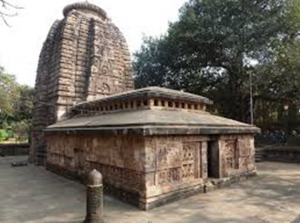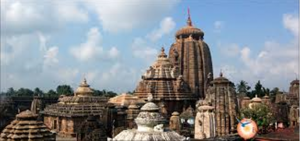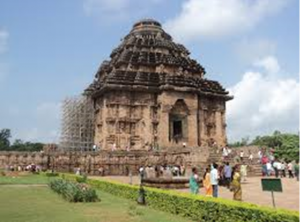Orissa: 750 A.D. to 1250 A.D.
Patronage of Chalukyan kings. Some influences from Gupta Style. Also an apparent influence of Buddhist and Jain Temple Complex Planning Concepts. Eg. Central temple Surrounded by Subsidiary Shrines enclosed within a courtyard.
Planning:
Temple essentially consists of two parts:
- Sanctuary- Deoul
- Square Mandapa- Jagmohan
Progressively two more parts were added
- Dancing Hall- Nat Mandir
- Hall of Offering- Bhog Mandir
These four parts in above order were in Axial Alignment.
In the later period “Deoul” plan approaching Star Shape and Diagonal Axis.
In some early examples Plan of Panchayatana type i.e. Temple with one central shrine with four subsidiary shrines eg. At Mukhalingeshwar
Form:
The building was basically a single story structure. Each hall in elevation made up of two main parts:
- Lowe cubicle portion- “BADA”
- Pyramidal roof- “PIDA”
“Deoul” in elevation made up of
- Lower “BADA”
- Roof comprising of
- Tall middle Chappara
- Flat Fluted Summit Disk- “Amla”
- It’s Finial- “ Kalasa”
The stark contrast in exterior and interior fenestration
Exterior- Highly Ornate and Intricate carving and groups of statuary.
Interior- Starkly Plain
Planning:
Temple essentially consists of two parts:
- Sanctuary- Deoul
- Square Mandapa- Jagmohan
Progressively two more parts were added
- Dancing Hall- Nat Mandir
- Hall of Offering- Bhog Mandir
These four parts in above order were in Axial Alignment.
In the later period “Deoul” plan approaching Star Shape and Diagonal Axis.
In some early examples Plan of Panchayatana type i.e. Temple with one central shrine with four subsidiary shrines eg. At Mukhalingeshwar
Construction:
- Temples of ‘astylar order’
- Sometimes, due to a structural necessity a group of four solid piers, one at each corner, of a four square system of roof beams, was introduced.
- The incipient form of the clear storey introduced in a temple of Parasuramesvara at Bhubaneshwar.
- Masonry of Dry Order i.e. large size stones kept in position by their own weight and balance and by a system of interlocking flanges.
- Later period- Konarak, employment of Chlorite in Statuary and laterite blocks in masonry.
Examples:
Part A: Early period 750 A.D to 900 A.D.
- Parasuramesvara at Bhubaneshwar
- Vaital Deoul at Bhubaneshwar
- Uttaresvara at Bhubaneshwar
- Someshwara at Mukhalingam
Above: Parasuramesvara Temple at Bhubaneshwar
Part B: Middle Period 900 A.D. to 1100 A.D.
- Mukteshwara at Bhubaneshwar
- Lingaraja at Bhubaneshwar
- Brahmeshwara at Bhubaneshwar
- Jagannath at Puri
Above: Lingaraja Temple at Bhubaneshwar
Part C: Later Period 1100 A.D. to 1250 A.D.
All at Bhubaneshwar
- Ananda Vasudev
- Siddheshwara
- Kedareshwara
Above: Sun Temple at Konark





